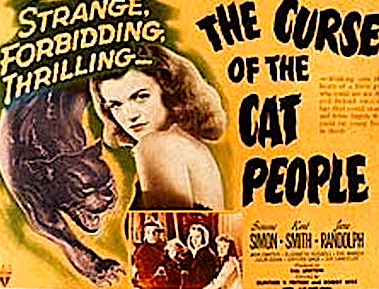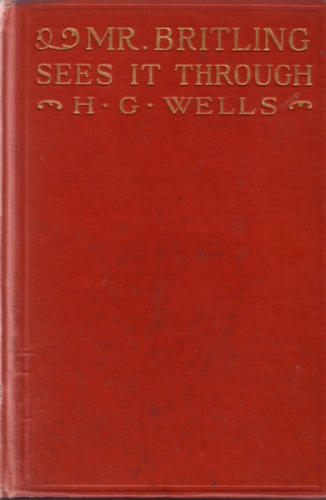
I think going over our list of reasons agents give for rejecting submissions on page 1 one by one is being very fruitful, but heavens, there are a LOT of them, aren’t there? I’m moving through them as swiftly as I can, but still, it feels a bit like wading through mud. Not to nag, but I suspect it feels that way in part because folks haven’t been chiming in too much lately. That could mean one of three things: you don’t have anything to say, you’re all off madly pulling together queries and submissions now that Martin Luther King, Jr. Day has passed, or this series has stunned and shocked you into a coma.
Of course, there have been one or two things going on in the outside world, too. But regardless of the reason, I would like to reiterate: if you have questions about any of this, PLEASE ask them. My goal in going over all of this so thoroughly is to be helpful, after all.
Today, I want to deal with the rejection reasons that did not fit comfortably into the kinds of general categories we’ve been discussing so far. The odd ducks, as it were:
39. Too many generalities.
40. The character shown is too average.
41. The stakes are not high enough for the characters.
60. The details included were not telling.
Shaking your head over the practically infinite subjectivity of this set? That’s not entirely coincidental, you know: just as one agent’s notion of fresh is another’s idea of weird, one agent’s Everyman is another’s Ho-Hum Harry.
And this is problematic, frankly, to most of us who have lived through Creative Writing 101. Weren’t we all told to strive for universality in our prose? (Which, until fairly recently, was code for appealing to straight, white men.) Weren’t we all ordered to write what we knew? (Which led to forty years’ worth of literary journals crammed to the gills with stories about upper middle class white teenagers, mostly male.) Weren’t we implored to be acute observers of life, so we could document the everyday in slice-of-life pieces of practically museum-level detail? (Which left us all sitting in writing class, listening to aspiring writers read thinly-fictionalized excerpts from their diaries.)
I can’t be the only one who had this writing teacher, can I?
Unfortunately, from an agent’s point of view, all of the good students obediently following this advice has resulted in a positive waterfall of submissions in which, well, not a whole lot happens. Every day, Millicent the agency screener reads of universal protagonists (read: ordinary people) in situations that their authors know intimately (read: ordinary life) acutely observed (read: the ordinary seen through a magnifying glass).
There’s nothing wrong with portraying all of that ordinariness, per se. It’s just that Millicent sees so darned much of it that it’s hard for an average Joe or Jane protagonist in an ordinary situation not to strike her as…
Well, you get the picture.
Millicent is screening to find the extraordinary manuscript, the one with the fresh worldview, spin, or writing style applied to a story about a character (or characters) who are different enough from character(s) she’s seen before to remain interesting for the length of an entire book.
Aspiring writers, particularly memoirists, often seem to fail to take that last part into account when preparing their submissions: if the story presented does not appear from the very first line on page 1 to be about a fascinating person in an intriguing situation, the manuscript is going to be a tough sell to everyone from Millicent to her boss to an editor at a publishing house to a contest judge. So if a book is about an Everyman living a life with which an ordinary reader might identify, it’s IMPERATIVE that he demonstrate some way in which either he or his story is not ordinary right away.
Why? Because otherwise, the manuscript is far too likely to get dismissed as just not very interesting or surprising.
It’s not for nothing, you know, that agents complain about how many submissions they see that #6, took too long for anything to happen, along with its corollary, the story’s taking time to warm up, as well as #7, not enough action on page 1. Many, if not most, first pages have no conflict on them at all, but are purely set-up.
Such an opening scene may be beautifully-written, lyrical, human life observed to a T. But from the business side of the industry’s perspective — and, despite the fact that agents are essentially the first-level arbiters of literary taste these days, they need to be marketers first and foremost, or they are of little use to those they represent — a slow opening translates into hard to sell.
And, to be perfectly frank, professional readers simply do not have the time or the patience to read on to see what this story IS about. Millicent might well risk being a few minutes late for her lunch date for the sake of a page of gorgeous prose, but if she doesn’t have an inkling of a plot by the end of it, she’s probably not going to ignore her stomach’s rumblings long enough to turn to page 2.
Sorry. As I believe I have mentioned before, this is not how submissions would work if I ran the universe. If I did, all good writers would be eligible for large, strings-free grants, photocopying would be free, and all of you would be able to share the particularly delicious pain au chocolat I am enjoying at this very moment. It’s so gooey that the bereted gentleman (yes, really) at the wee round table next to me offered a couple of minutes ago to lick the chocolate off my fingers so I could readdress my keyboard in a sanitary manner.
The habitués of this coffee shop are exceedingly friendly, apparently. And very hygiene-minded. Or perhaps I have stumbled into — gasp! — the lair of the cat people.
This (the ordinariness of characters, that is, rather than licking chocolate off fingertips; stop thinking about that and get back to work) is something that comes up again and again in agents’ discussions of what they are seeking in a manuscript. An interesting character in an interesting situation is featured in practically all of their personal ads advice on the subject, particularly if the protagonist is not the character one typically sees in such a situation. A female cadet at a prestigious military academy, for instance. A middle-aged stockbroker arrested for protesting the WTO. A veteran cop who is NOTA paired in his last month of duty with a raw rookie.
That sort of thing. Interesting and surprising are synonymous more often than fans of the ordinary might think.
So while a very average character may spell Everyman to a writing teacher, an average Joe or Joanna is typically a very hard sell to an agent. As are characters that conform too much to stereotype. (How about a cheerleader who isn’t a bimbo, for a change? Or a coach who isn’t a father figure to his team? A mother who doesn’t sacrifice her happiness for her kids’?)
So I ask you: could you work an element of surprise onto page 1 of your submission, the best place to catch an agent’s eye?
Before you chafe at that, remember that lack of surprise can render a protagonist less likable, even for readers who do not, like Millicent, drop a book like a hot coal if the first few paragraphs don’t grab them. For some reason I have never been able to fathom, given how often writing teachers lecture about the importance of opening with a hook, this justification for keeping the opening lively is seldom mentioned, but it is in fact true: ordinary characters tend not to be all that engaging, precisely because they are average, and thus predictable.
For most readers, an unpredictable jerk is more interesting to follow than a beautifully-mannered bore, after all. It’s hard to blame Millicent and her cronies for that.
Or if it won’t work in your story to open with something surprising, how about vitally important? I don’t necessarily mean important on the global scale, but within the world of the story you’re telling.
One of the best ways of preventing your protagonist from coming across as too average is to elevate the importance of what is going on in the opening to that character. A protagonist or narrator’s caring passionately about the outcome of a conflict practically always renders a scene more interesting, because it prompts the reader to care about the outcome, too.
Of course, this is a whole lot easier to pull off in an opening scene that features a conflict, right? Which, as #32. Where’s the conflict? suggests, is not as common to those first few pages as agents and their Millicents might like.
That’s why too-typical teenage characters often fall flat for screeners, incidentally: a character who is trying to be cool and detached from a conflict can often convey the impression that what is going on in the moment is not particularly important. But what’s more engaging than a protagonist who feels, rightly or wrongly, that what is going on before the reader’s eyes is the most important thing on earth right now? When the protagonist wants something desperately, that passion tends to captivate the reader.
All of which leads us nicely to critique #41, the stakes not being high enough. “Why should I care?” is a question screeners ask with distressing frequency. If a book opens with the protagonist in an emotionally-fraught or otherwise dangerous situation, Millicent may answer that question may be answered immediately.
Which is, in case you’d been wondering, one of the reasons lecturers as writers’ conferences so often spout the advice to start a book with a conflict already in progress. It’s not from a rabid desire to excise quiet scenes from literature in favor of action movie-type antics; it’s a means to draw the reader into caring about what is happening to the protagonist.
Okay, so it’s also a way to avoid boring Millicent, but good writing has been known to multi-task.
It doesn’t always work to open with an honestly life-or-death situation, of course, but far too many novels actually don’t start until a few pages in. As I’ve mentioned before (and shall no doubt mention again), it’s not at all uncommon to find a terrific opening line for a book on page 4 or page 10, or for scene #2 to be practically vibrating with passionate feeling, while scene #1 just sits there. (Again, I think this is a legacy of the heroic journey style of screenwriting, which dictates that the story open in the protagonist’s everyday reality, before the challenge comes.) Choosing to open with a high-stakes scene gives a jolt of energy to the reader, urging her to keep turning the pages.
I sense some disgruntled shifting in chairs out there, don’t I? “But Anne,” some suspense-loving rules lawyers protest, “if I begin on a high note, the story has nowhere to go but down. Isn’t it more surprising if I start small, then startle the reader with a bang?”
Many, many writers want to keep something back, to play their best cards last, to surprise and delight the reader later on. But for very practical reasons, this is not the best strategy in a submission: if this series has made anything clear, it is that you really do need to grab a professional reader’s attention on page 1. Preferably within the first paragraph.
#39, too many generalities, is a trap that tends to ensnare writers who are exceptionally gifted at constructing synopses. How so? Well, In a synopsis, it is very helpful to be able to compress a whole lot of action into just a few well-chosen words; it’s a format that lends itself to a certain amount of generalization. To folks who excel at this, it’s tempting to introduce a story in general terms in the book itself.
As any professional reader could tell you, those who do not excel at summary also fall prey to this temptation pretty often. Generalizations abound on page 1.
So why do agents frown upon this practice? Well, it feels to them like the writer is warming up, rather than diving right into the story.
Sound familiar? It should by this point in the series: your garden-variety fiction or memoir agent is looking for good, in-the-moment sensations on the first page, visceral details that will transport her quickly to the time and place your characters inhabit. The writer is the travel agent for that trip, and it’s your job to make the traveler feel she is actually THERE, rather than just looking at a movie or a photograph of the events described.
Long-time readers of this blog, chant with me now: too many writers rely too heavily on visuals.
Sensual details sell. Or, to put it another way: doesn’t your protagonist have a NOSE? What about fingertips?
Conveniently enough, this segues very nicely into #60, the details included were not telling. This is editor-speak for a manuscript that mentions specifics, but not ones that are very evocative. They don’t help set the mood of the piece, nor do they give the reader a sense of place. They just say what’s there, period.
These details are, to harken back to my first point, ordinary.
For instance, I could tell you that the café I currently inhabit is brightly-lit, with windows stretching from the height or my knee nearly up to the ceiling, small, round tables with red-varnished wooden chairs, and a pastry case full of goodies. A young and attractive barista is making the espresso machine emit a high-pitched squeal. I just held the door for a woman on crutches who was wearing a yellow rain slicker and a green scarf, and four of us here are working on laptops.
That description is accurate, certainly, but what did it tell you as a reader? I could be in virtually any café anywhere in the world; it is probably raining outside, but my reader does not know for sure; you don’t even know the sex of the barista.
But what if I added the telling detail that, in order to work, I have had to turn my back to the glass doors keep sending fog-chilled blasts past my skirt as patrons shed their coats in the doorway? That gives you both seasonal detail and information about me: I am concentrating; I am wearing a skirt despite the cold weather; I am not expecting to meet anyone I know here.
Or what if I mention that the barista’s three-day stubble reminds me of a Miami Vice-loving guy I dated in college? That both describes the guy in my peripheral vision and tells the reader my age, in rough terms.
Or that I am bouncing my leg up and down at roughly the same rate as the fresh-faced girl in sweats across the room, scowling into a sociology text book? That conveys both caffeine consumption and the fact that I’m near a university.
Get the picture?
Now how much more do you feel you are here with me if I add that the air is redolent with the smell of baking cheese bread, the oxtail soup of the flat-shoed retiree at the table next to me, and the acrid bite of vinegar wafting from her companion’s I’m-on-a-diet salad? What if I work in that I have been moving my cell phone closer and closer to me for the past 15 minutes, lest the clanking of cups, nearby discussions of Nancy Pelosi and the war in Iraq, and vintage Velvet Underground drown out my call to flee this place? What about if I tell you that the pony-tailed busboy currently unburdening the overflowing wall of meticulously-labeled recycling bins — a receptacle for glass, one for plastic, one for newspaper, one for cardboard, one for compostable products — is a dead ringer for Bud Cort, of HAROLD & MAUDE fame, put down his volume of Hegel to attend to his duties, and ran his beringed hand across the Don Johnson clone’s back as he passed?
All of these details help convey a sense of place, and of me as a character (a rather nervous one, I notice from the last paragraph; must be all of the coffee I’ve been drinking) within it. Thus, these details may properly be regarded as telling.
The wonderful short-short story writer Amy Hempel once told me that she believes that the external world her characters inhabit is only relevant insofar as it illuminates the character’s mood or moves the plot along. I’m not sure I would put it quite so baldly, but I think this theory can be applied very productively to lackluster ambient detail. If a protagonist is sad, I want to hear about the eucalyptus trees’ drooping leaves; if she is frenetic, my sense of her heartbeat will only be enhanced by the sound of cars rushing by her as she jogs.
And, of course, if I’m going to be told about her shoes — which, I must confess, don’t interest me much as objects, since I’m not the heroine of a chick lit novel — they had better reveal something about her character.
Few good short story writers would think to take up space with unrevealing details, but even very good novelists frequently get bogged down in description for its own sake — and if you doubt that, revisit our initial list of reasons agents give for rejecting submissions on page 1 for abundant evidence of just how often submitters tumble into this particular pitfall. But I’ve noticed in my travels that if the details are interesting, revealing, and yes, surprising, professional readers like Millicent tend not to squawk about them much, even if there are a few too many. If the description is peppered with revealing details, it is hard for it to feel extraneous to what is going on.
All right, I’ve outstayed the beret-wearing finger-lover, so I am going to venture out onto the street now. Since my feet are practically rattling on the floor, I probably should not drink any more coffee.
Keep up the good work!

















